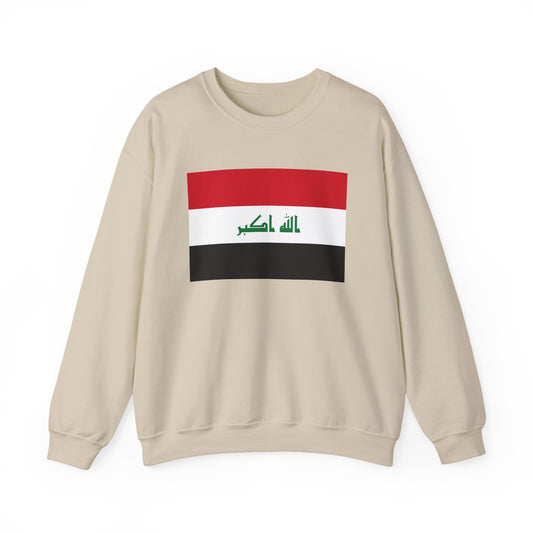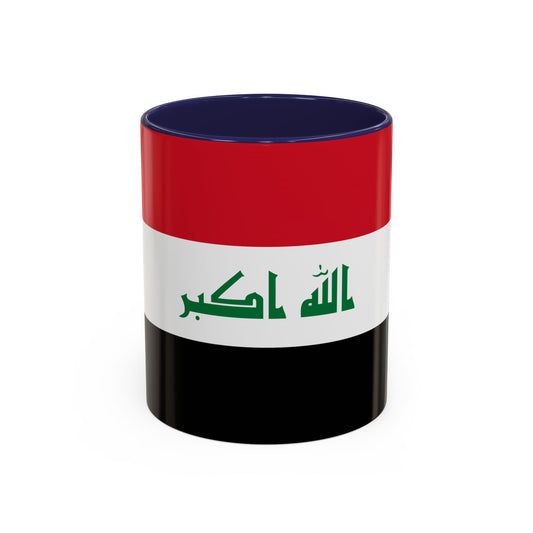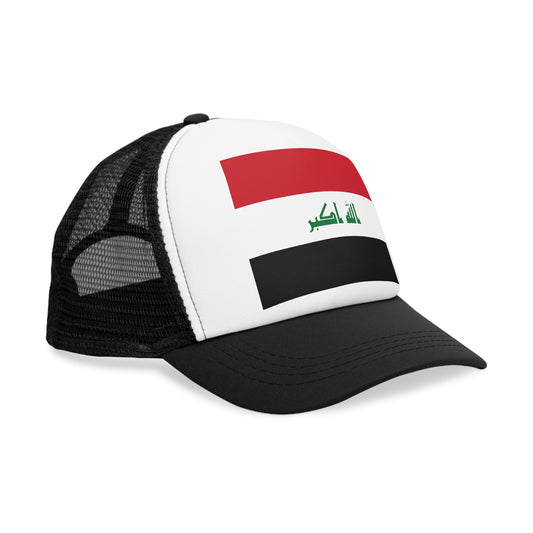-
Iraq Sweatshirt
Regular price $34.15 USDRegular priceUnit price / per -
Iraq Pillow
Regular price $22.65 USDRegular priceUnit price / per -
Iraq Backpack
Regular price $59.79 USDRegular priceUnit price / per -
Iraq Leather Patch Hat
Regular price $18.85 USDRegular priceUnit price / per -
Iraq Flag Sweatshirt
Regular price $34.15 USDRegular priceUnit price / per -
Iraq Trucker Cap
Regular price $14.90 USDRegular priceUnit price / per -
Iraq Hoodies
Regular price $34.40 USDRegular priceUnit price / per -
Iraq T-shirts
Regular price $22.79 USDRegular priceUnit price / per -
Iraq Flag Hoodies
Regular price $34.40 USDRegular priceUnit price / per -
Iraq Flag on T-shirt
Regular price $22.79 USDRegular priceUnit price / per
Collection: Iraq
The Iraq flag is a symbol of national pride and identity, representing the country's rich history and cultural heritage. We will delve into the flag's design, history, symbolism, and current relevance and explore some lesser-known facts and associated protocols.
Overview of the Iraq Flag

The flag of Iraq showcases a striking trio of horizontal stripes in bold red, white, and black, with a distinctive addition of the Takbir, "Allahu Akbar," emblazoned in vibrant green Arabic script across the central white band. This simple yet profound design embodies a shared historical and cultural connection with other Arab nations through its color scheme. The presence of the Takbir, written in elegant Kufic calligraphy, adds a layer of religious and national significance, making the flag a symbol of the country's sovereignty and a reflection of its predominant Islamic faith. The choice of colors and the script resonates deeply with the Iraqi people's values, struggles, and aspirations, capturing both their rich heritage and their hopes for a peaceful and prosperous future.
Historical Context of the Iraq Flag
The Iraq flag's journey has been marked by significant change, mirroring the nation's complex and often turbulent history. The flag, as known today, was adopted on January 22, 2008, which marked a pivotal moment in Iraq's narrative, particularly in the wake of Saddam Hussein's fall. This was not the first iteration of the flag; it had undergone numerous transformations since the formation of the modern Iraqi state. Initially, the flag was introduced in the 1920s when Iraq was established under British mandate, featuring different symbols and colors over the decades to reflect the changing political landscape.
Significant among these changes was adding the Takbir in the green script to the flag during the Gulf War in 1991, a move initiated by Saddam Hussein to garner support by appealing to religious sentiments. This script, "Allahu Akbar," symbolized unity and resistance against coalition forces. The post-2003 period saw discussions and proposals for a new flag design. It reflected the desire to move forward from Iraq's past under dictatorship and represent its diverse cultural and ethnic communities. However, the 2008 design, which retained the primary colors and the Takbir, was chosen as a compromise, embodying both continuity and a break from the past.
Symbolism Behind the Iraq Flag

The colors and symbols of the Iraq flag are imbued with deep significance, each element telling a part of the country's story. The red stripe across the top speaks to the courage and bloodshed of the Iraqi people throughout their history, highlighting their sacrifices in the face of adversity. Below it, the white stripe stands as a beacon of hope and peace, reflecting the nation's aspirations for harmony and a brighter future. The black stripe at the bottom signifies the oppressive periods that have darkened Iraqi history, particularly under the regime of Saddam Hussein, reminding the people of the resilience required to overcome such times.
At the heart of the flag lies the Takbir, "Allahu Akbar," rendered in vibrant green Arabic script. This phrase, which translates to "God is the greatest," underscores Iraq's Islamic faith, serving as a unifying call to the country's majority Muslim population. Its presence in green, a color traditionally associated with Islam and representing growth and vitality, emphasizes the spiritual and religious identity of the nation. Kufic calligraphy for the Takbir adds an element of cultural heritage, linking contemporary Iraq with its historical roots in the Islamic Golden Age. Through these colors and symbols, the Iraq flag weaves a narrative of struggle, faith, and hope, encapsulating the essence of the Iraqi spirit.
Current Relevance of the Iraq Flag
Today, the flag of Iraq serves as a powerful emblem of the nation's unity and sovereignty, especially during significant events such as Independence Day celebrations and state ceremonies. It flies proudly at government buildings, educational institutions, and public squares, symbolizing the enduring spirit and resilience of the Iraqi people. Despite its ubiquitous presence, the flag occasionally becomes a focal point in national identity and representation debates, reflecting the country's ongoing efforts to reconcile its diverse ethnic and sectarian composition.
In military ceremonies, the flag honors the sacrifices of soldiers and veterans and stands as a testament to Iraq's sovereignty and independence. Moreover, it is common in international forums and sports events, representing Iraq on the global stage. While discussions about its design continue, the flag's role in fostering a sense of belonging and pride among Iraqis remains undiminished, highlighting its significance in the nation's collective consciousness.
Additional Facts about the Iraq Flag
The protocols surrounding the display and handling of the Iraq flag are steeped in traditions that honor its importance and sacredness. It is considered a grave disrespect for the flag to come in contact with the ground, signifying the high regard in which the symbol is held. This mirrors the broader practice of showing reverence to national symbols across cultures. During military ceremonies, individuals demonstrate their respect and loyalty to the flag by placing the right hand over the heart as it is hoisted or paraded, a gesture that underscores the deep emotional and patriotic connection Iraqis feel towards their national emblem.
An interesting aspect of the Iraq flag is the specific protocol for folding it, which is not merely a matter of practicality but also of symbolism. Each fold is imbued with meanings that reflect various facets of Iraq’s heritage, values, and aspirations, though the exact interpretations of these folds are often left to the context of the ceremony or the discretion of the participants, adding a layer of personal significance to the act.
The inscription of the Takbir in Kufic script is another notable feature. This choice of calligraphy, known for its geometric precision and beauty, links the contemporary flag with Iraq’s rich contributions to Islamic art and scholarship. The use of Kufic, one of the oldest forms of Arabic script, not only enhances the flag’s aesthetic appeal but also serves as a nod to the historical depth and cultural achievements of the Iraqi people. This meticulous attention to detail in the flag’s design elements highlights the complexity and richness of Iraq's national identity.






















